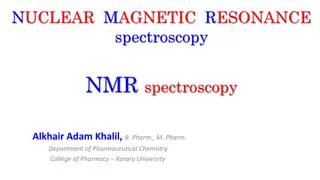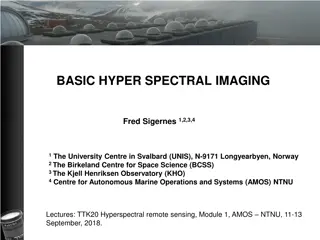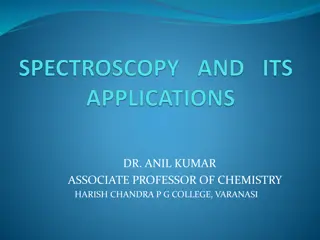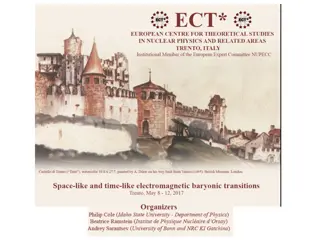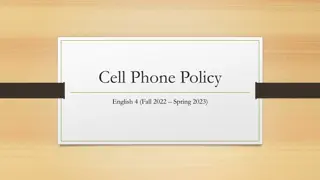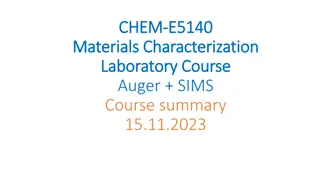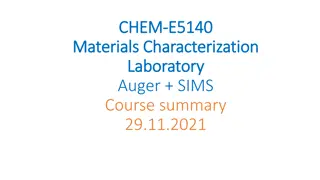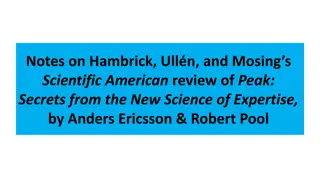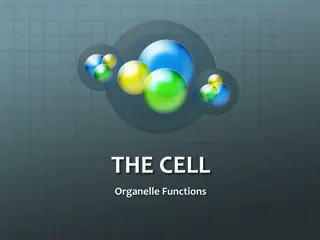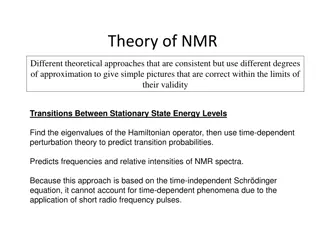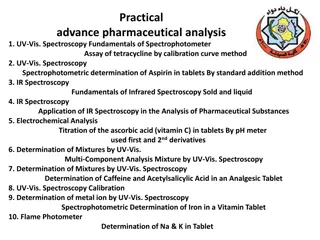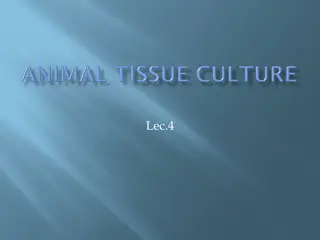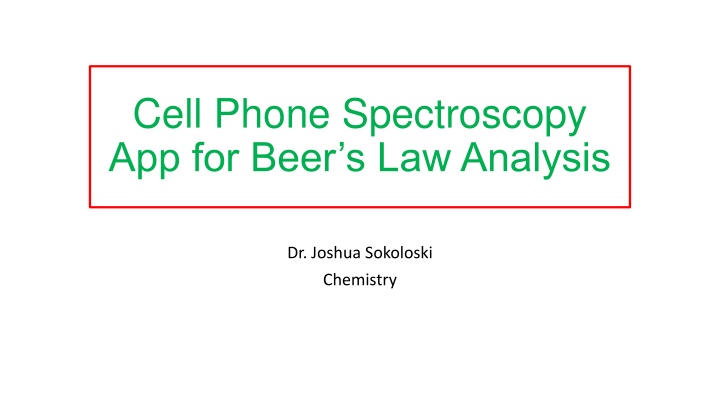
Cell Phone Spectroscopy App for Beer's Law Analysis in Chemistry
Dive into the world of spectroscopy and how cell phone technology can be harnessed to analyze Beer's Law in a cost-effective and educational manner. Explore the potential of a cell-phone-based spectrometer app for enhancing remote learning experiences in chemistry labs, meeting the growing demand for online teaching modalities.
Uploaded on | 0 Views
Download Presentation

Please find below an Image/Link to download the presentation.
The content on the website is provided AS IS for your information and personal use only. It may not be sold, licensed, or shared on other websites without obtaining consent from the author. If you encounter any issues during the download, it is possible that the publisher has removed the file from their server.
You are allowed to download the files provided on this website for personal or commercial use, subject to the condition that they are used lawfully. All files are the property of their respective owners.
The content on the website is provided AS IS for your information and personal use only. It may not be sold, licensed, or shared on other websites without obtaining consent from the author.
E N D
Presentation Transcript
Cell Phone Spectroscopy App for Beer s Law Analysis Dr. Joshua Sokoloski Chemistry
Spectroscopy Study of Light Absorption and Emission by Matter. Allows us to investigate the structure of atoms and molecules, detect their presence, and find their concentrations. Image from World Precision Instruments
Absorption of Visible Light by a Solution of a Dye Image from Dr. L. Baxley Cal Poly
Wavelength Absorbed vs Color Perceived Our eyes see the dye as Red Allura Red Absorbs Green Light the Most
Beer-Lambert Law ? = ??? ????? ? = ?? Where A is absorbance is the molar absorptivity (M-1 cm-1) b is the pathlength (cm) C is the concentration (M) Image from UNC Pharmacy
What We Need Spectroscopy and its use to determine concentration of dissolved molecules in solution is a key learning objective in general chemistry lab. There is a lack of an affordable, practical product to incorporate spectroscopy into remote and online teaching modalities. A cell-phone based spectrometer approach would be highly useful to general chemistry instruction both here at SU and at other universities. The pandemic has expanded the demand for remote and online learning so this need will persist post-pandemic.
What is currently available The optics of modern cell phone cameras rival those of detectors I used in grad school on 100k instruments. The physical capabilities are there, we just have to convert the data into a form useful for chemistry and biology. Plenty of color analyzer apps available, but they only give out color information and not absorbance of a certain wavelength. A 2016 J Chem Ed paper outlines how a color wheel approximation to absorbance is feasible for Beer s Law Analysis: https://pubs.acs.org/doi/full/10.1021/acs.jchemed.5b00844 Carolina Biological Supply sells a cell phone spectrometer kit but requires the use of color analyzer apps.
Goals Overall goal convert the color signal from a cell phone camera into an absorbance value for use in Beer s Law. Need to be both for iPhones and Android devices. How ideally it would work: 1. Aim camera at sample. 2. Color of sample is translated to an Absorbance of a different color by the program and estimates the wavelength of maximum absorbance. 3. Create a standard curve: Store A signals for a series of known concentrations. 4. Plot curve and fit to a linear regression. 5. Aim camera at unknown sample and estimate the concentration.
Division of Labor and Future Applications Not a physical chemistry project! The science is well understood and I would handle all aspects of the physics of light absorption and color to Abs conversion information. The project team would handle the programming for camera data processing, GUI, data storage, etc.. I am teaching CHEM 122 labs this semester and in the summer so I can have my students test out any early versions. Future applications could include: 1. 3D printing devices to better focus light or develop a cuvette holder. 2. Could be used for field work in environmental sciences 3. Could be further expanded into fluorescence or luminescence techniques. 4. I have 3D printed a small microscope. Using a cell phone as the camera would be ideal.


